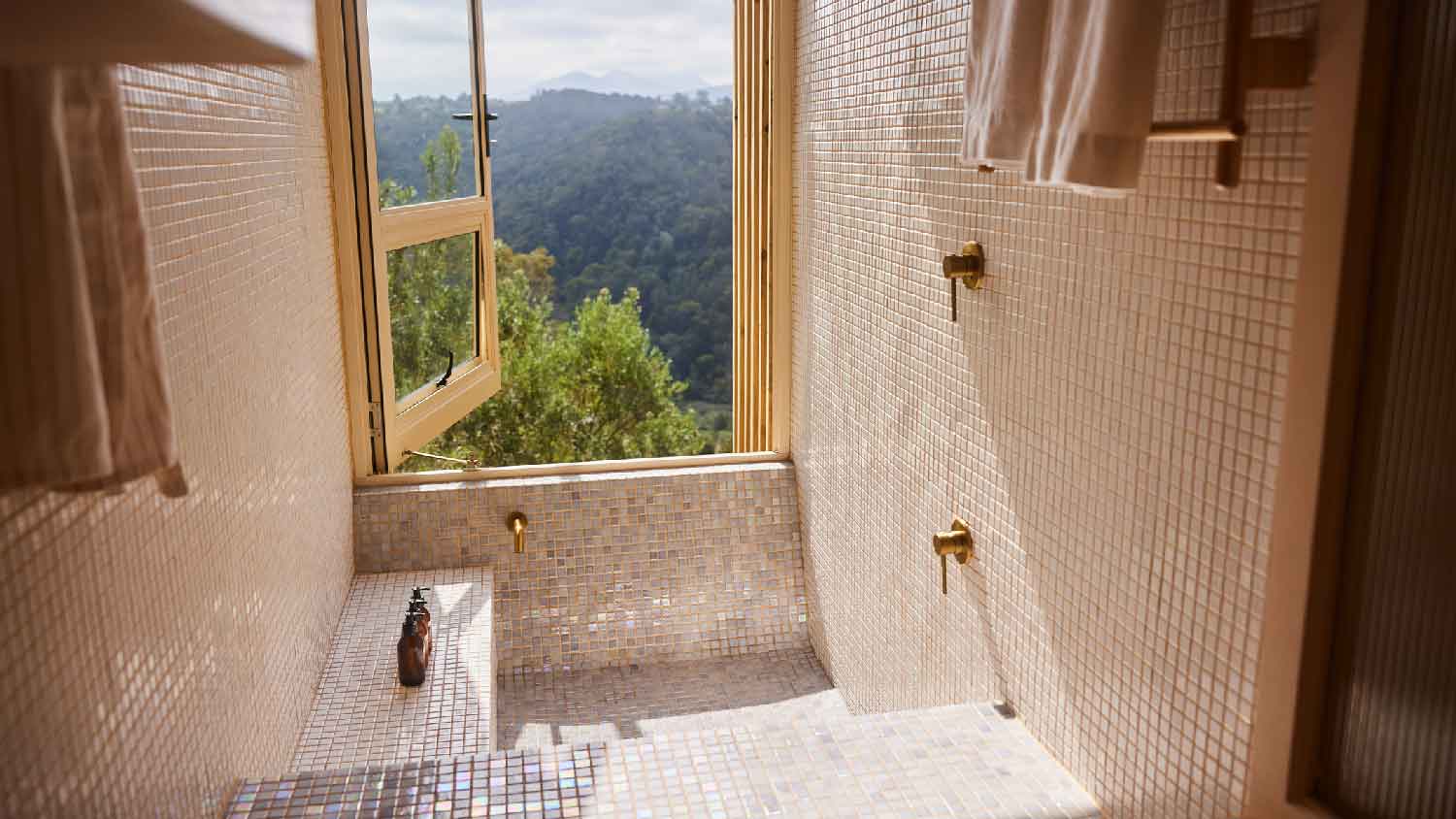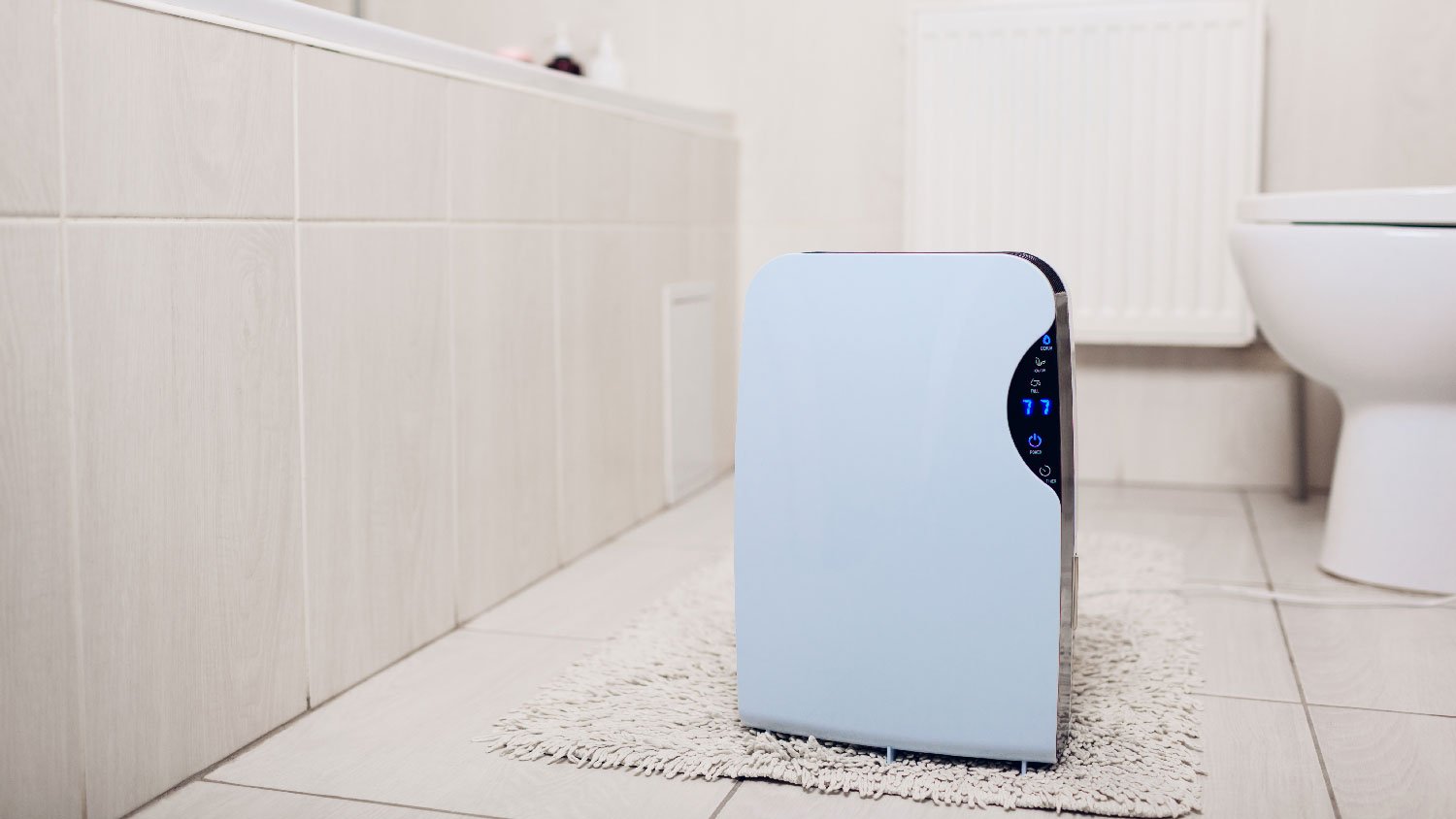How to Reduce Moisture in the Bathroom
Spend more time relaxing in the bathtub, and less time cleaning it


After a long soak in the tub or a steaming hot shower, it's natural for your bathroom to be a little foggy. But if that humidity lingers long after your bath or shower is finished, it can cause serious problems, including mold growth. These tips on how to reduce moisture in your bathroom will help keep humidity levels in check.
1. Turn on the Fan
Bathrooms often have a built-in extractor fan, which pulls humid air out of the room and away from the house. If you don't already do so, get in the habit of running the fan every time you shower or bathe. Keep the fan running for about 15 minutes afterward, too.
If you don't have an exhaust fan in the bathroom, it may be a good idea to install a bathroom fan. Depending on the project, and whether you DIY or hire an installer, the cost to install a bathroom fan ranges between $240 and $550.
2. Open a Window

No fan in the bathroom, and no way to install one? Open the window before you shower and leave it open for about 30 minutes after you finish. While an open window doesn’t have the force of an exhaust fan, it will help improve ventilation in the room, and keep humidity down.
If you don't have a window in the bathroom, another option is to leave the door open when you shower. Obviously, this tip only works if you live alone, have a private bathroom, or are very close to the people you live with. Leaving the door open won't pull the moist air away from your home, either. But it will keep it from building up in a small space.
3. Dry Surfaces After a Shower
Even if you have a fan or window, it's a good idea to get in the habit of drying damp or wet surfaces after each bath or shower. If you leave little puddles in the tub or shower walls, they'll eventually evaporate, making the air more humid.
Keep a towel by the tub or shower and wipe down the walls and floor after you bathe. Another option is to keep a squeegee in the shower, and use it to pull water toward the drain.
Also, if you notice the bathroom mirror fogging up, use a towel to dry it.
4. Remove Damp Linens From the Bathroom
It seems natural to leave towels in the bathroom. But, if you're dealing with humidity problems, hanging damp towels up after your shower can make things worse.
Instead, install hooks on the outside of the bathroom door and hang towels there. Another option is to drape used towels over a drying rack, in the laundry room or another area of the house, to give them a chance to dry after use.
As an added bonus, your towels will dry faster and won't develop a mildewy odor.
5. Warm-Up the Bathroom
Cold air holds more moisture than warm air. If your bathroom is on the chilly side, warming it up may help to reduce moisture levels.
You don't have to crank up the heat in the rest of the house to warm up your bathroom. One option is to use a small space heater while showering. Just be sure to choose a space heater that's approved for use in a bathroom, and keep it away from any wet surfaces.
Another option is to install radiant floor heating. The heated flooring will keep your bathroom toasty and warm without making the rest of your house a furnace.
6. Use a Dehumidifier

A dehumidifier pulls moisture from the air and can help prevent mold growth. Portable models are easy to set up in a bathroom and typically only require an electrical outlet to work. You may need to empty the bucket of the machine as it fills up. Some models give you the option of continuous drainage, allowing you to connect a hose from the dehumidifier that drains into a tub or sink.
If you don't want to spend the money on a portable dehumidifier, another option is to use a moisture absorber. A moisture absorber is typically a bucket or sack filled with crystals that pull moisture from the air. You need to replace the moisture absorber when the crystals are completely saturated and can't hold any more moisture.
7. Take Cooler, Shorter Showers
You don't have to take freezing cold showers, but lowering the temperature a bit when you bathe will result in less humidity in the air and a dryer bathroom. If you can cut the time it takes you to shower, you'll also help keep your bathroom dry.
8. Insulate Your Bathroom
When figuring out how to reduce humidity in the bathroom, consider insulating your bathroom to reduce your risk of water and mold damage. You can add moisture-resistant insulation to your walls, such as spray foam or rigid foam boards. These are less prone to absorbing water than traditional fiberglass. You can also add a vapor barrier behind the drywall to prevent moisture from seeping into the insulation and framing. For even more protection, use a green board or cement board, which resists water better than standard drywall.
It’s also important to insulate your bathroom ceiling, especially in areas with attic access, to avoid condensation. Seal any gaps around windows, doors, and plumbing fixtures with waterproof caulk or spray foam to prevent drafts and leaks.
For your floors, consider adding a waterproof underlayment beneath tile or vinyl to block moisture. Heated flooring systems with insulating layers can also reduce condensation caused by cold surfaces. These measures can all help prevent mold growth in the bathroom. You can also seal gaps around windows, doors, and plumbing fixtures with waterproof caulk or spray foam to prevent drafts and leaks.
Signs of Too Much Moisture in the Bathroom
There are a few telltale signs that can tip you off that there’s too much moisture in your bathroom. Signs of too much bathroom moisture include a musty smell, mildew and mold growth, peeling paint or wallpaper, rotting wood, and noticeable condensation on windows, mirrors, and tiles.
You can also test your humidity levels in your bathroom. If the reading shows anything higher than 50%, you have too much moisture in your bathroom and should take steps to lower the humidity.
Frequently Asked Questions
Mold thrives in wet and humid conditions, and the bathroom can often be an ideal place for it to grow. If you are worried about mold, it's a good idea to hire a local mold inspector to inspect your bathroom.
How you handle the mold depends on the extent of the issue. If it's on the caulk or other surface, a deep cleaning with mold-killing products such as vinegar or bleach may be sufficient. For a large infestation, you'll most likely need professional mold remediation.
Mold growth is just one common sign of excess moisture in the bathroom. You may also see the paint in the room start to peel away from the walls, or that the walls remain wet for some time after you bathe.
Condensation on the windows is another sign that your bathroom has a potential moisture problem. The room itself may start to smell like mildew.
Many types of houseplants thrive in humid, moist conditions, making bathrooms an ideal location for them. While a plant may absorb some moisture from the air, they generally also emit moisture–especially when there are several of them grouped together. Use plants to beautify your space, but don't rely on them to control the humidity levels in your bathroom.





- 13 Daily Bathroom Cleaning Tips for Busy People
- Bathroom Fan Leaking Water? Common Causes and What to Do
- How to Remodel a Bathroom: Everything You Need to Know
- 6 Tips for Converting Your Bathtub Into a Shower
- 13 Common Mistakes to Avoid When Renovating Your Bathroom
- Tub-to-Shower Conversion Ideas to Inspire Your Bathroom Renovation
- 40 Budget-Friendly Small Bathroom Ideas to Spruce Up Your Space
- 11 Must-Know Bathroom Remodeling Tips for Building Your Perfect Space
- How to Convert a Tub to a Walk-In Shower
- 7 Steps to Getting Ready for Your Bathroom Remodel










